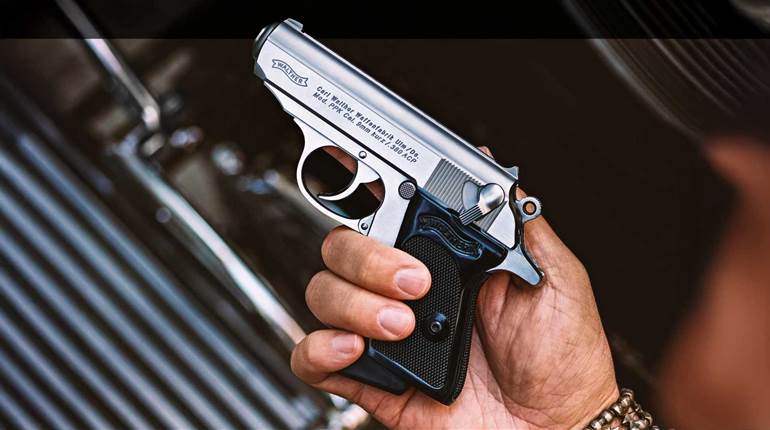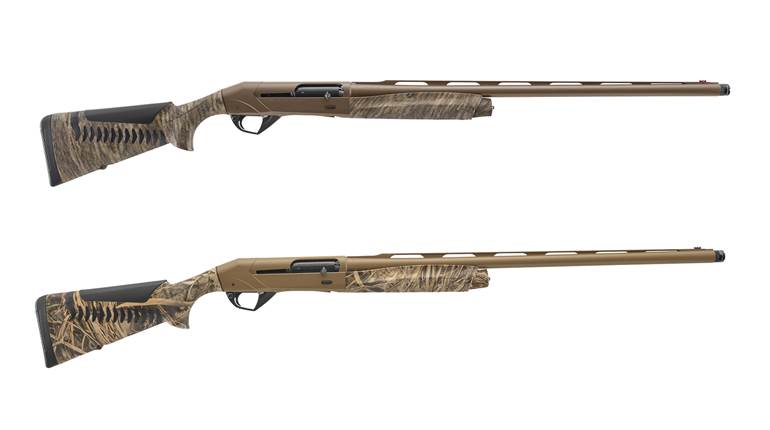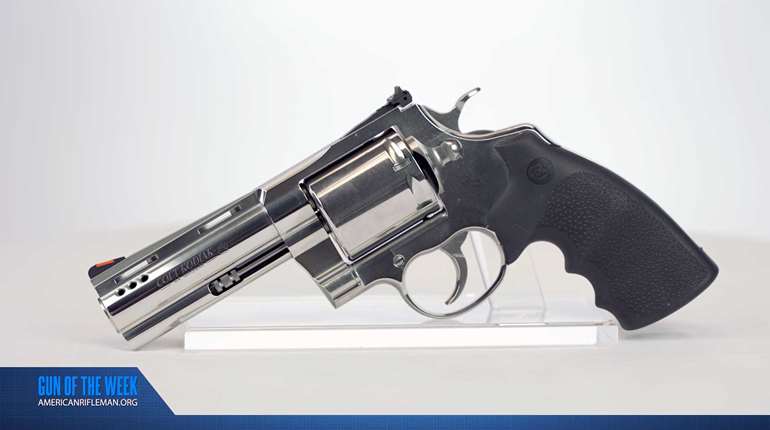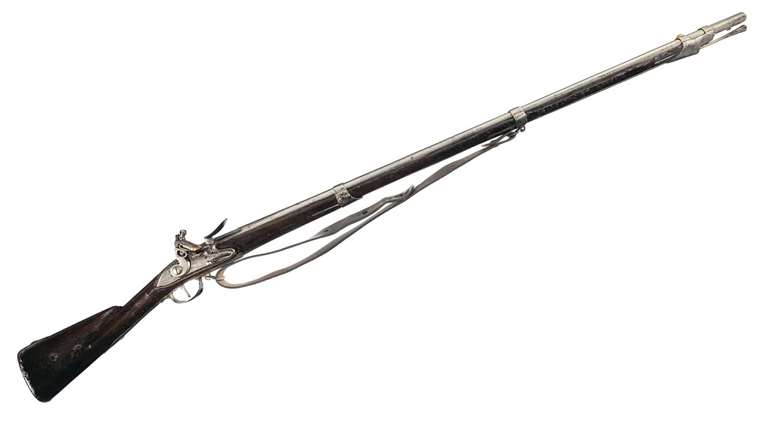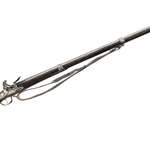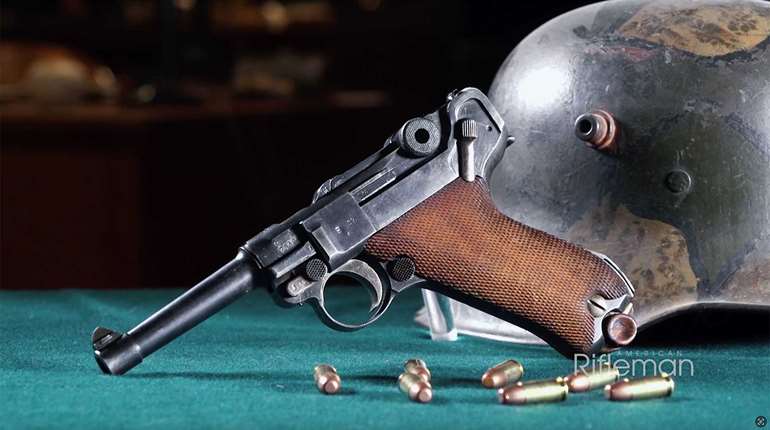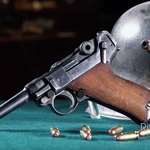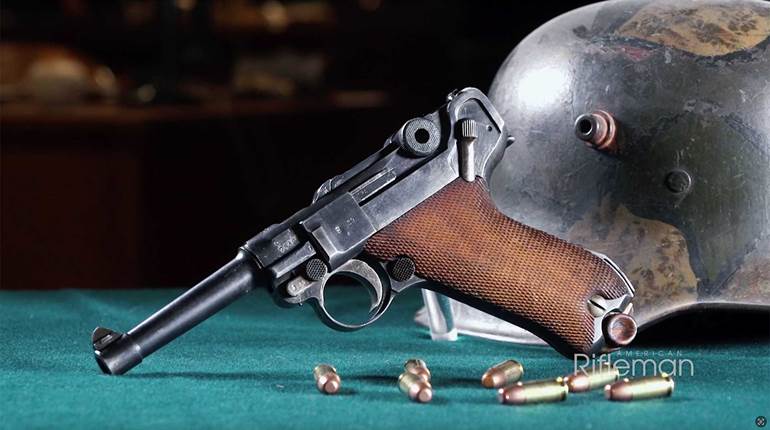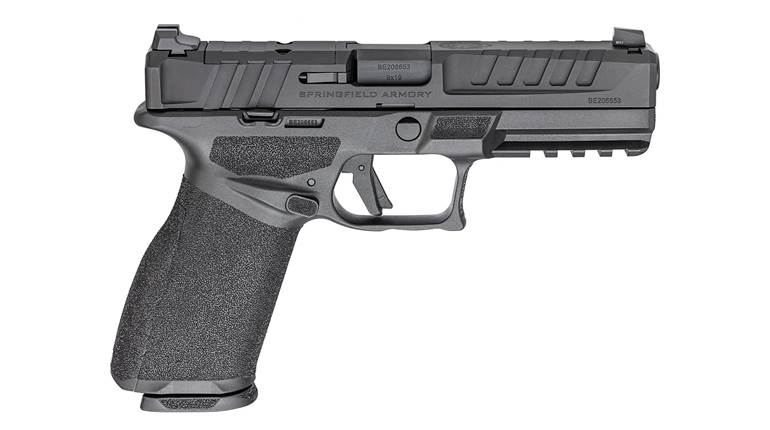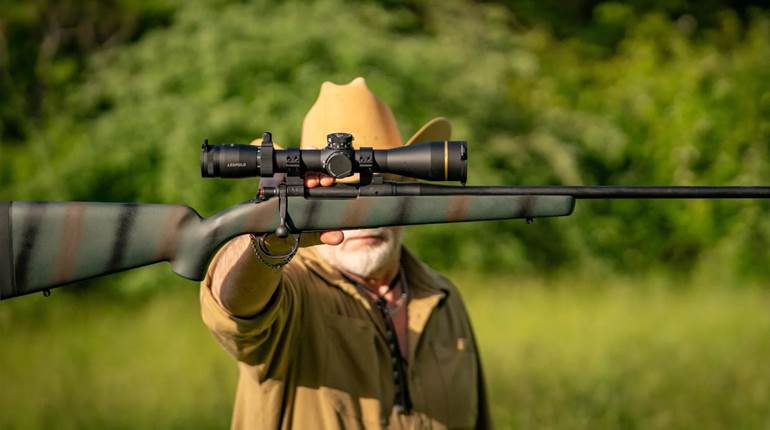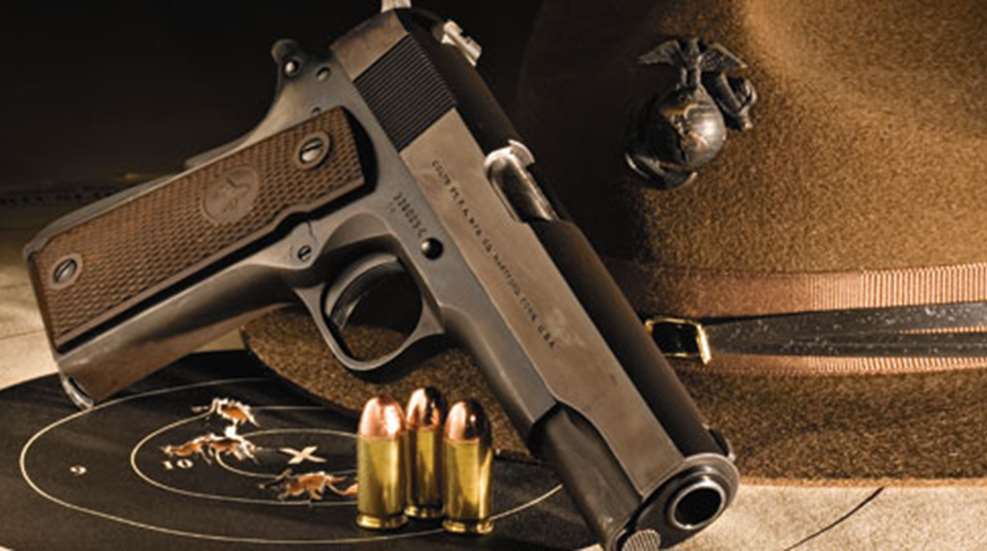
What is a handgun? As defined by the U.S. Federal Firearms Act, 15 U.S.C., Chapter 18: “Handgun. (a) Any firearm which has a short stock and is designed to be held and fired by the use of a single hand; and (b) any combination of parts from which a firearm described in paragraph (a) can be assembled.” But a handgun is so much more than that. Handguns or “hand-gonnes” have been a fabric of culture and society as long as “fire-arms” have been with us. Indeed, according to Pollard’s History Of Firearms, the first recorded use of “handgunnes” dates to November 7, 1388. Another early appearance of the term in print dates to 1448 in Archaeologia XXII. 63.
In more modern terms, the allure and importance of the handgun has increased. One of the best explanations for this comes from the late NRA Director Col. Jeff Cooper and his insight from The Complete Book of Modern Handgunning. “The fascination of the pistol lies in the idea of controlling power with one hand,” he wrote. “Aside from its value as a fighting arm and a sporting instrument, the pistol has other areas of utility. Fortunately, there are still times and places in which a man may have need of a firearm and yet find a long gun cumbersome or impractical.” And that sums up the role of the handgun as well as may be done.
Cooper also wrote, “It is interesting to note that the pistol went from a negligible, last-ditch sort of gadget into its present form, almost overnight, historically speaking.” The handgun is a reliable, potent instrument of self-defense. Although there are such anomalies as the Heckler & Koch “Mk 23 Mod 0 Offensive Handgun Weapons System,” the handgun remains primarily defensive in nature. As Thunder Ranch’s Clint Smith says, “[H]andguns are truly at their best when they are used to fight your way to a rifle.” The handgun’s chief advantage is that it is portable enough to always have with you. If you were going to a gunfight, unless you’re a Hollywood action hero, the last gun you’d take is a handgun. I hope never to be invited to a gunfight (it’s unlikely I’d attend, anyway), but belt-fed and 7.62 mm would be elements in my choice of armament. No, it is the portability of the handgun, the fact that it may be unobtrusively carried on the person without undue burden-discreetly or openly-that is the enduring appeal. Why do police officers carry handguns? Because they can-all day every day. They are short, handy, appropriately powerful, and easily and discreetly stored.
But handguns are not just about gunfights or personal protection. They are arguably the most difficult of competition arms to master. Try competing in NRA Bullseye or 2600, and you’ll know. World-class handgunners can turn in groups that even competent riflemen envy. Handy and compact, they have been used effectively as hunting arms for centuries. Think handguns are no good for dangerous game? You might want to Google the word “Howdah.” Large, powerful revolvers in major chamberings are just as appropriate for hunting as they are for self-defense and plinking. The T/C Contender revolutionized handgun hunting, but just missed being on our “Top 10.“ Pistol shooting, whether with a vintage Woodsman in the backyard or Hammerli free pistol in Olympic competition is about harnessing and channeling that power, about the discipline of both body and mind in the attainment of perfection.
There is an almost unhealthy fascination with “Top 10” lists in our culture. In such rankings, something or someone must win, someone or something must lose. “Top 10 Handguns” is admittedly a pretty broad category, and there is no clear delineation between military and civilian arms-with handguns they are one and the same with no line to even blur. Handgun technology through the past 600 or so years spans from a tube in which rudimentary powder and a rock are stuffed down the front and ignited with a piece of smoldering rope to the completely interchangeable, multi-caliber, polymer-frame SIG P250 introduced last year. So we limited the voting to self-contained metallic-cartridge handguns, meaning any cartridge gun after the Lefaucheux Pinfire in 1835.
We looked for technological innovation (in my view the Modello 1889 System Bodeo was a clear winner over the Colt Single Action Army, but for reasons that escape me, cowboys and Hollywood never embraced the Bodeo). Other critical areas included service life, impact on contemporary and subsequent designs, competition use, and military and police use. How many were made and for how long? We placed high importance on what step in the evolution of the handgun was marked by a particular design.
The panel was comprised of Brian C. Sheetz, senior executive editor; Glenn M. Gilbert, shooting editor; Aaron Carter, managing editor; Angus K. McClellan, assistant editor; Field Editors Chad Adams, Wiley Clapp and Mike Humphries; and National Firearms Museum Director Jim Supica, Senior Curator Phil Schreier and myself.
Each panelist listed his picks for the “Top 10” from one to 10. A first-place vote received 10 points; a 10th place vote received one. With 10 panelists, the maximum score possible was 100-the top gun received 92, an “A” in most school systems. The 10 handguns receiving the most points were named to the list. In the event of a tie, the guns with the highest-placed votes received the lower ranking.
Any such list is open to compliments or condemnation. That’s kind of the point of such an exercise. Our votes are listed on our website, and there is an online poll for members to weigh in with their thoughts. There will also be a “Top 10” blog for staffers and members to post their thoughts. We will publish the poll results along with comments and insights we deem appropriate in a future issue. The whole point of such exercises is to provide entertainment, to encourage debate and provide education. -Mark A. Keefe, IV, Editor In Chief
No. 1: The M1911, M1911A1 Pistols And Variants, 92 Points
How can this happen? The firearm in question is only two years from its official 100th birthday. On March 29th, 1911, Col. John T. Thompson of Army Ordnance signed a letter to Colt’s president in which he announced the adoption of the Colt .45 automatic pistol as the official service handgun of the U.S. Army. A joint effort of Colt engineers and dedicated Army officers, working with gun genius John M. Browning, the pistol had won out in test trials against a distinguished field-including a damnably persistent Savage entry-to become the official U.S. military sidearm. This is all well-documented history and easy to summarize. It is harder to explain why the gun is still with us almost a century later. It is a complex of both objective and subjective reasons that combine to guarantee a happy centennial birthday for the pistol of the century, the M1911 Government Model.
In fact and fancy, there is much to be said for the M1911 pistol. Objectively, I cannot name a handgun that delivers more mud-and-sand reliability than the Government Model. All of the internal parts are solid chunks of steel, and they last longer than the sheet metal pressings and wire parts used on today’s competing designs. It is an easy gun to maintain and teach to students. I used to regularly detail strip mine in Vietnam to ensure that immersion in rivers and rice paddies had not deposited an unpleasant surprise in the gun’s innards. No tools required. It is accurate enough for personal defense at 25 long steps, often beyond. With the attention of a qualified armorer with premium parts, the pistol shoots under an inch at 25 yds. It is a credit to the basic design that it has been shortened, lengthened, widened and otherwise fooled with, for a host of perceived needs both good and bad, but with no measurable deterioration of reliability. Since the gun was intended for personal defense by service members whose duties precluded carrying rifles or carbines, one must look closely at what the Government Model has delivered in the way of performance. Beyond a doubt, there is no other service handgun made in the lifespan of the Colt .45 that can equal-or even approach-that of the M1911 Government Model when it comes to resolving conflicts, stopping fights, and keeping Americans alive and fighting.
As Americans, we have come to love this marvelous firearm. Surprisingly, much of that affection is fairly recent. Glancing at the Gun Digest for 1970, we see that there was only one maker of the Government Model: Colt. Today, there are more than I can count. The guns are available in an array of finishes and features, but just about every current maker produces a model similar to the basic gun first fired in anger before World War I. Although part of this recent love affair turns on wide availability, there would be no supply of the guns if there were no demand for them. A good bit of the demand comes from an objective appreciation of the inherent worth of the design, and some of it may be pure nostalgia. More is based on the development of a style of shooting, developed in the late 20th century, which represents the highest and best use of this superb firearm. It is the handgun of the century, made by dozens of makers and in millions of numbers. The late Jeff Cooper best nicknamed the gun when he called it “The Yankee Fist.” It is the “Pistol, Caliber .45, Model 1911A1.” -Wiley Clapp, Field Editor
No. 2: Smith & Wesson Hand Ejector Revolvers, 53 Points
First, we need to straighten out this “Hand Ejector” terminology. It comes from when S&W also made hinged-frame revolvers that ejected fired cases automatically when the gun was opened. To differentiate from that style, S&W called its new models “Hand Ejectors” in that the fired cases had to be ejected by hand from the opened, swing-out cylinder.
The system was developed in the early 1890s and was first used on the .32 Hand Ejector series in 1896. Basically, any modern S&W revolver is a Hand Ejector. That takes in many millions of wheelguns, but there are multiple virtues to the system. In 1899, there came the .38 Hand Ejectors, followed by .22s in 1902 and .44s in 1907. A different designation system called these four basic frame sizes I, K, M and N, respectively. The I-frame morphed into the J-frame in the early 1950s and the L-frame evolved out of the K-frame in the ’70s. Then there is the massive X-frame. All are derived from designs of the late 19th century. They all work the same way and handle with the same simplicity and safety.
That’s a considerable tribute to the basic mechanism, which might seem delicate but is remarkably durable. With rare exceptions, these double-action/single-action revolvers come with excellent trigger pulls in both modes. For precise shooting, the crisp single-action pull can’t be beat, and the double-action smoothness is legendary. Above all other virtues of the Hand Ejectors comes the versatility of the system. It was the platform for the police revolver of the century-the K-frame .38-and the foundation for many magnum cartridges.
For police service, plinking, competition, hunting and personal defense, where revolver is the question, Smith & Wesson is the answer. Thus it has been for more than a century.-Wiley Clapp, Field Editor
No. 3: Glock Pistols, 41 Points
The Glock 17 earned its third-place ranking for innovation and manufacture numbers, among other things, rather than service life or “coolness,” though some would boldly argue the latter. Regardless, the pistol has proven reliable, durable, accurate and easy to maintain. To date, more than 4 million Glocks-the 17 and its variations-have been manufactured.
Named for Austrian mechanical engineer Gaston Glock’s 17th patent, the Model 17 was designed and built in less than six months, and a second version shortly thereafter, to vie for the Austrian military contract, which Glock G.m.b.H. handily earned. Foreign militaries and law enforcement agencies alike soon flocked to Glock. Functionally, the 17 was a locked-breech, striker-fired, semi-automatic pistol in 9 mm Luger. The similarities to most prior designs, however, stopped there.
Glock-with a background in synthetic materials-designed the 17 with an injection-molded polymer frame, which not only reduced overall weight and manufacturing costs, but also added corrosion-, weather- and impact-resistance. And the polymer frame held a 17-round-capacity double-stack magazine without an unduly thick grip.
Another noteworthy feature of the 17 was “Safe Action,” in which a polymer lever projected through the face of the trigger shoe and served as the gun’s only manual safety-three safeties are deactivated by the trigger pull. It was simple, yet effective, and for every shot the trigger pull was consistent.
Although the polymer-frame, delayed-blowback H&K VP 70Z predated the Model 17, Glock proved that polymer-frame handguns not only work, but they do so very well. It is a pistol that forever changed the handgun landscape. -Aaron Carter, Managing Editor
No. 4: Smith & Wesson Model One Revolver, 33 Points
To the modern eye, the Smith & Wesson Model One looks like more of an ugly duckling curiosity than a “Top 10” handgun. It’s a diminutive single-action chambered for an anemic .22 rimfire cartridge. The hinged barrel has to be tipped up, and the bored-through cylinder removed, to load or unload the revolver.
This little seven-shooter, however, is arguably the granddaddy of all modern handguns. After the development of Colt’s repeating revolver in the late 1830s, the next technological challenge was the development of self-contained ammunition to replace the cumbersome and weather-sensitive percussion system, which required that loose powder, a lead bullet and a primer all be loaded into a firearm to render it ready to fire.
Daniel B. Wesson and Horace Smith had taken one swing at the conundrum with a lever-action repeating pistol, which came to be known as the Volcanic (see No. 5), and it proved to be far from satisfactory. They sold the design to a shirt manufacturer who saw some promise in the lever-action concept. His name was Oliver Winchester.
Undaunted, Smith and Wesson found a winner in their second partnership. They introduced the first widely successful American repeating handgun chambered for a self-contained metallic cartridge in 1857, and named this first S&W revolver, logically enough, the Model One.
It was chambered for a cartridge that is essentially the blackpowder twin to today’s .22 rimfire short, and it found immediate success. The era of the modern handgun had begun. All of today’s modern cartridge handguns can trace their lineage to the little Model One. -Jim Supica, Director,
National Firearms Museum
No. 5: Volcanic Volitional Repeater, 31 Points
The story of the Volcanic is also the combined stories of Smith & Wesson, the self-contained cartridge and the Winchester Repeating Arms Co. Only the genius of John Browning surpasses the influence of this gun in future firearm development. Prior to 1848, almost all firearms were loaded with loose or packaged powder, a ball and a separate primer. Walter Hunt changed all that in August 1848 with his invention of a hollow-based, conical-shaped bullet that held the propellant in the base cavity of the round. Hunt employed the services of a noted New York gunsmith by the name of Lewis Jennings to manufacture a rifle suitable to fire his self-contained cartridge. Unable to successfully market the new gun, Hunt and Jennings sought a partnership with Cortland Palmer, who invested heavily in the manufacture of the gun and who also sought out the help and advice of Horace Smith to make improvements to the gun and assist in marketing the rifle.
More than 5,000 Jennings rifles were completed by 1851 at the Robbins & Lawrence Co. in Windsor, Vt. At the Robbins & Lawrence factory, Smith made the acquaintance of another noted gunmaker, Daniel B. Wesson who was also employed at Robbins & Lawrence. Wesson was working on a project to make a pistol that fired the newly developed self-contained metallic Flobert cartridge. It was there, at Robbins & Lawrence, that Smith and Wesson figured that the magazine repeating rifle of Jennings could be improved if it used a self-contained cartridge. In 1852 the two men formed a partnership that today stands as one of the most successful icons of firearm manufacture and development in the history of the world.
In 1853 they took out a patent on an improved metallic cartridge that is today the single most produced round ever, the .22 rimfire. Adapting this round to a magazine-fed pistol resulted in the introduction of the Volcanic pistol in 1854.
Large- and small-frame pistols in .31 and .41 calibers were manufactured, yet problems persisted with the feed and extraction systems. Palmer, feeling that the endeavor was a bottomless money pit with no hope of success, bowed out of the partnership and was replaced with a wealthy New Haven, Conn., haberdasher by the name of Oliver Winchester. Smith and Wesson sold their interest to Winchester, who reorganized the company first under the name Volcanic Arms and then as New Haven Arms Co. Later, with the help of shop foreman and inventor Benjamin Tyler Henry, Winchester was able to develop and market Henry’s progression of the Volcanic into the famed Henry Repeating Rifle. That eventually led to another reorganization of the company, which became known as The Winchester Repeating Arms Co. in 1866.
Smith & Wesson formed a second partnership in November 1856 and began producing revolvers on the Rollin White bored-through-cylinder patent (the S&W Model One, No. 4), and the rest is, as they say, history. -Phil Schreier, Senior Curator, National Firearms Museum
No. 6: Colt’s Single Action Army Revolver, 31 Points
Few revolvers, if any, are as revered or recognizable as the Colt Single Action Army, also known as the “Colt Peacemaker” or Model of 1873, given its acceptance into the U.S. military in that same year. Although Samuel Colt died in 1862, his idea of a revolving-cylinder firearm culminated in what is known today as “The Gun that Won the West”-along with the Winchester 1873, of course. It became legendary in Buffalo Bill’s Wild West Show in the early 20th century and has been immortalized in countless Western movies and television shows.
Colt’s Mfg. Co. built and delivered more than 37,000 SAAs for the U.S. military from 1873-91, the period during which it was standard-issue. The then-new self-contained cartridge revolver, in its original Cavalry guise, came in .45 Colt, had a 7½" barrel, solid-frame construction and a blued, color-casehardened finish and walnut grips. By the end of the First Generation production (1873-1941), it had been available in at least 30 different chamberings, production exceeded more than 350,000, and they were available engraved or in custom configurations. Add in the Second Generation, the Third Generation, then the replicas and clones, and we’re talking millions of Single Action Armys.
Servicemen of the day considered it rugged, sturdy and dependable, and the SAA withstood months and years of abuse on the Western Frontier and around the world. Cowboys, soldiers, hunters, frontiersmen, outlaws, sheriffs and shopkeepers were attracted to its power and well-designed simplicity. It bore witness to some of the most historically significant events of the past 140 years. George A. Custer’s 7th Cavalry carried them at Little Bighorn; Theodore Roosevelt’s Rough Riders carried them at the Battle of San Juan Hill; T.E. Lawrence carried one in Arabia; and Gen. George S. Patton carried his famous ivory-gripped Single Actions from 1916 until his death in 1945. Colt continued manufacturing versions of the gun periodically, and today still offers a number of models for sale, as do other manufacturers. It truly is an American legend. -Angus K. McClellan, Assistant Editor
No. 7: Walther PP, PPK, PPK/S Pistols, 31 Points
The PP, or Polizei Pistole or “police pistol” is not a single model, but really a series of blowback-operated semi-automatic pistols developed by Walther that includes the PP, PPK, PPK/S and PPK/E. Their common features include an exposed hammer, a double-action trigger mechanism, a single-column magazine and a fixed barrel that doubles as the guide rod for the recoil spring.
The PP was released in 1929 and the PPK in 1931. The PP and the PPK were among the world’s first successful double-action semi-automatic pistols. Instead of having to manually cock the hammer on a PP, a single long pull of the trigger cocked the hammer then released it to fire. The slide’s movement cocked the hammer for single-action operation for subsequent shots. There was also a safety on the slide that safely dropped the hammer when depressed-a device better known today as a decocker.
From 1929 to 1945, they were made exclusively by Walther in Zehla Mehlis, Thuringia, Germany. After the war Walther set up shop in Ulm, Germany. By combining efforts with Manurhin just across the border in Strasbourg, France, Walther was able to resume production of the PP-series pistols. For years they were imported by Interarms of Alexandria, Va., but like other Walther pistols, they are currently distributed by Smith & Wesson. All production has been under license from Walther, including U.S. manufacture of the PPK/S.
The PP was made in both 7.65 mm (.32 ACP) and 9 mm Kurz (.380 ACP), and the smaller PPK was available only in 7.65 mm. Before and during World War II they were sold commercially in Germany and produced for the German police and military, including the Luftwaffe and Nazi Party officials.
The PP is beautiful in appearance, innovative in design and smooth in operation. It has inspired numerous copies, including the Soviet Makarov, the Hungarian FEG PA-63 and the Czech CZ50, but none of them hold a candle to the original. -Glenn M. Gilbert, Shooting Editor
No. 8: C96 Mauser “Broomhandle” Pistol, 27 Points
Designed for Mauser by a trio of Swiss brothers, the Federles, the C96 was state-of-the-art at the time it appeared at the turn of the century. Mauser produced and sold more than a million C96 pistols between 1896 and 1937. In addition, vast numbers of unlicensed copies continued to be made in Spain and China until the 1950s. It has a number of unique features that set it apart from later semi-automatic pistols, including a fixed, 10-round box magazine forward of the trigger guard fed by stripper clips, a bolt that traveled within its upper receiver and a thin, awkward grip that gave it its “Broomhandle” nickname. These features made the C96 unduly large and unbalanced.
Despite these limitations, the Broomhandle was popular and remained in service for decades. There were a number of reasons for its success. To start with, it was the first semi-
automatic pistol reliable and powerful enough for military service. Second, because it was compatible with the production methods and technology of the time, Mauser could deliver them, so it was always available. Last, it was supplied with a detachable buttstock that doubled as a holster. The necessity for a proper grip and precise sight alignment make handgun marksmanship a skill with a steep learning curve. The Broomhandle’s long sight radius and detachable shoulder stock meant that inexperienced troops were free to shoot it from the shoulder. Although technically a handgun, the Broomhandle was arguably a compact semi-automatic carbine in disguise. This quality is lost on many today because purpose-built military carbines and submachine guns have been available for decades. In sum, the Mauser C96 (Construktion 96) was not the first, nor was it the best, but it was the first commercially and militarily successful semi-automatic pistol. -Glenn M. Gilbert, Shooting Editor
No. 9: Browning Hi Power Pistol, 25 Points
John M. Browning began development of the Hi Power, his final pistol design, at the request of Fabrique Nationale, which was motivated by the prospect of fulfilling a French military request for a service sidearm. Variously known as the GP, for Grande Puissance, which is French for high power, or Grand Rendement, for “high yield,” the pistol is more commonly referred to simply as the Hi Power or P-35-the latter referring to the year that it was adopted by the Belgian military after the French passed on it in favor of a similar, inferior design.
For its day, the Hi Power was indeed capacious, holding 13 rounds of 9 mm Luger in its staggered, double-column magazine. Yet the Hi Power still managed to present a grip frame that allowed a comfortable grasp by all but the smallest hands. It also possessed a natural pointability exhibited by few handguns before or since that time.
Although Browning’s first prototype was of blowback design, the second was a simplification of his already well-regarded locked-breech M1911 concept. But the Hi Power eliminated the M1911’s swinging link in favor of a frame-mounted cam bar and corresponding cut in the barrel’s underside. It was typical Browning design: pioneering, simple and foolproof. Operationally, though, the Hi Power was still the familiar locked-breech, single-action semi-automatic that could be carried with the hammer cocked and locked by the manual, frame-mounted safety. John Browning died in his FN office in 1926 before the gun was finalized, and it was FN’s Dieudonné Saive (best known for the Fusil Automatique Leger) who finished the design and shepherded it into production.
Changes to the gun’s original design have been relatively few. The internal extractor gave way to an external type fairly early on, and the safety eventually became more generous in dimension and ambidextrous. Also, investment cast frames, said to be stronger for the later .40 S&W versions of the pistol, replaced the forged and machined frames used in earlier guns. Variations, some rare, have included tangent-sighted models that accept detachable shoulder stocks, experimental aluminum-frame and large-caliber models and licensed copies with shortened slide/barrel assemblies.
But, overall, as with most true classics, the Hi Power simply soldiered on as Browning originally conceived it, earning the trust of groups as diverse as the German Wehrmacht, the armies of Britain, Canada, Greece and Nationalist China, and countless law enforcement agencies and civilian shooters worldwide. It remains in production today by Fabrique Nationale.
In the retrospective of the “wondernine wars” of the 1980s and the following advent of polymer-frame pistols, many have relegated the steel-frame and walnut-stocked Hi Power to the category of quaint but outmoded designs. Although there may be an element of truth in that sentiment, the Browning Hi Power nonetheless possesses a quality of design, feel and workmanship that compel some individuals to trust it as the best nine a man can carry and to cherish it as one of the world’s truly great handguns. -Brian C. Sheetz, Senior Executive Editor
No. 10: Smith & Wesson Registered Magnum Revolver, 18 Points
The post-World War I era, through Prohibition, the Depression and other trials, saw the rise of a new class of criminal in American society. Well-armed villains, such as Dillinger and Capone’s henchmen, used firepower and V-8 Fords on their crime sprees. At the time, most federal and local law enforcement agencies issued medium-frame .38 Spl. revolvers. A quest for more firepower ensued, and by the early 1930s luminaries such as Elmer Keith and Philip Sharpe influenced Smith & Wesson leadership, and-with Winchester cooperating in ammunition development-went to work on a new platform.
The result was what many firearm experts consider the high-water mark for American revolver-making when in 1935 S&W ushered in the magnum era with the remarkable Registered Magnum. Making its debut amid the Great Depression at $60, this was an immensely expensive gun. But it was unique, as each purchaser was issued a certificate of registration that matched a number engraved on the revolver. Consumers could choose between stocks, hammer, sights, trigger, finish and barrel length.
Smith & Wesson expected the Registered Magnum to be more of a niche offering, which is reflected in its price and craftsmanship. The topstrap and barrel rib exhibit checkering that is proof of a master engraver’s touch. The wood-to-metal fit is meticulous; the bluing is unmatched, deep and rich; the timing boarders on perfection. These qualities, present throughout the entire S&W line during this era, are rendered to their fullest measure in the Registered Magnum.
The revolver was nothing short of exquisite, and the cartridge itself was truly revolutionary. With performance that well exceeded the .38 Spl., the .357 S&W Magnum became the most significant challenge in law enforcement to the decades-long dominance of the medium-frame .38s until the advent of the 9 mm Glock 17. With higher velocities and more downrange energy, the .357 Mag. revolutionized handgun hunting. A hit with lawmen, hunters and shooters, the .357 Mag. launched the magnum age-one that has yet to dissipate.
With demand drastically outpacing production capability, approximately 5,500 Registered Magnums were produced from 1935 to 1938; in 1939 production was standardized, and the process of registration was eliminated, forever setting a finite production amount for this pivotal revolver.
The Registered Magnum-and its .357 Mag. cartridge-forever ushered in the magnum era. The big N-frame went on to house even more powerful cartridges, including the .41 Mag. and the most famous big-bore handgun cartridge of all time, the .44 Rem. Mag. In contemporary times, S&W has once again reclaimed its perch atop the magnum mountain with the blistering .460 and the massive .500 S&W Mag. But the genesis of it all, the original spark in the proliferation of big-bore magnum chamberings, forever belongs to the Registered Magnum and its .357 S&W Mag. cartridge. -Chad Adams, Field Editor












